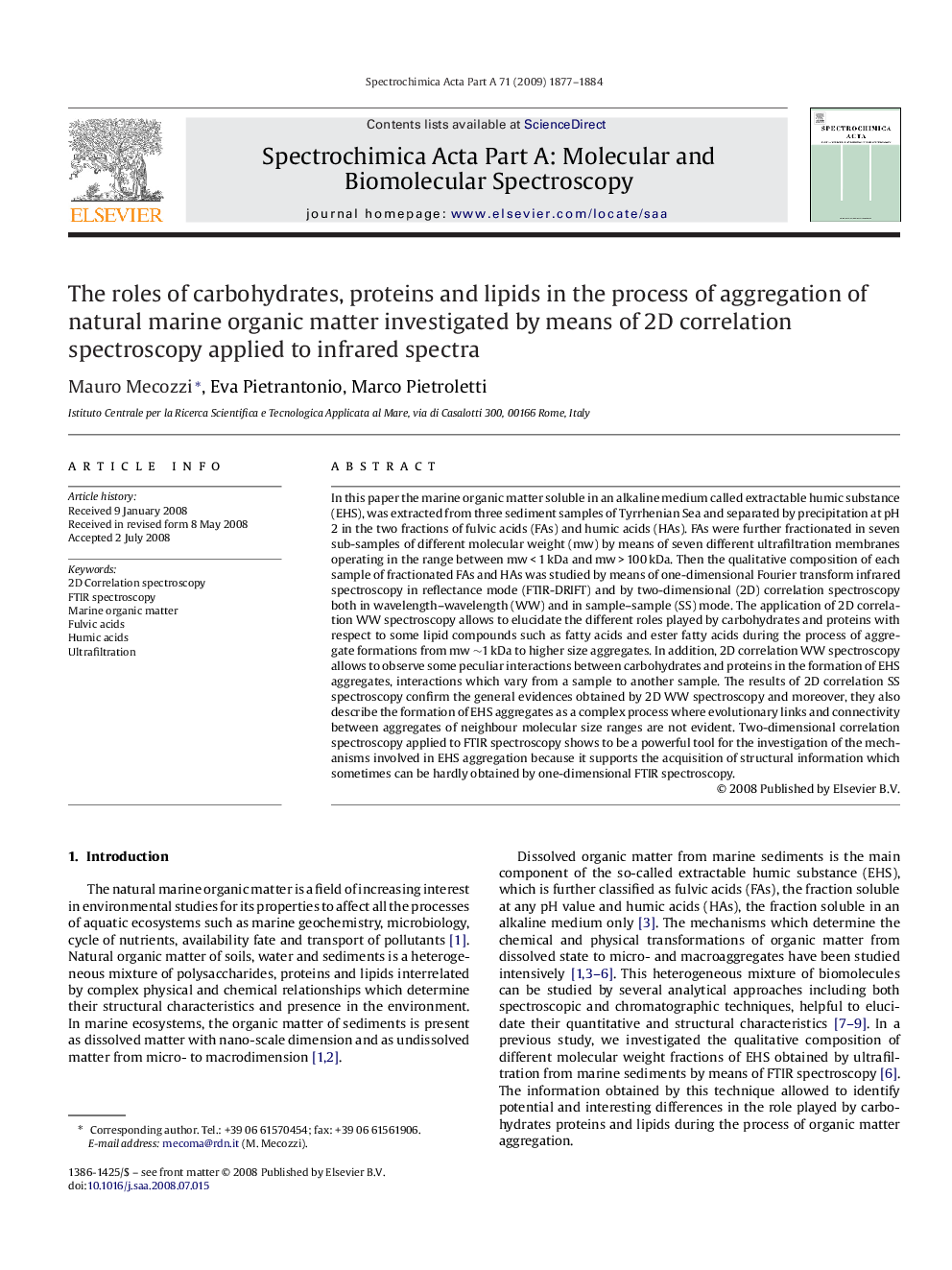| کد مقاله | کد نشریه | سال انتشار | مقاله انگلیسی | نسخه تمام متن |
|---|---|---|---|---|
| 1234985 | 968840 | 2009 | 8 صفحه PDF | دانلود رایگان |

In this paper the marine organic matter soluble in an alkaline medium called extractable humic substance (EHS), was extracted from three sediment samples of Tyrrhenian Sea and separated by precipitation at pH 2 in the two fractions of fulvic acids (FAs) and humic acids (HAs). FAs were further fractionated in seven sub-samples of different molecular weight (mw) by means of seven different ultrafiltration membranes operating in the range between mw < 1 kDa and mw > 100 kDa. Then the qualitative composition of each sample of fractionated FAs and HAs was studied by means of one-dimensional Fourier transform infrared spectroscopy in reflectance mode (FTIR-DRIFT) and by two-dimensional (2D) correlation spectroscopy both in wavelength–wavelength (WW) and in sample–sample (SS) mode. The application of 2D correlation WW spectroscopy allows to elucidate the different roles played by carbohydrates and proteins with respect to some lipid compounds such as fatty acids and ester fatty acids during the process of aggregate formations from mw ∼1 kDa to higher size aggregates. In addition, 2D correlation WW spectroscopy allows to observe some peculiar interactions between carbohydrates and proteins in the formation of EHS aggregates, interactions which vary from a sample to another sample. The results of 2D correlation SS spectroscopy confirm the general evidences obtained by 2D WW spectroscopy and moreover, they also describe the formation of EHS aggregates as a complex process where evolutionary links and connectivity between aggregates of neighbour molecular size ranges are not evident. Two-dimensional correlation spectroscopy applied to FTIR spectroscopy shows to be a powerful tool for the investigation of the mechanisms involved in EHS aggregation because it supports the acquisition of structural information which sometimes can be hardly obtained by one-dimensional FTIR spectroscopy.
Journal: Spectrochimica Acta Part A: Molecular and Biomolecular Spectroscopy - Volume 71, Issue 5, January 2009, Pages 1877–1884